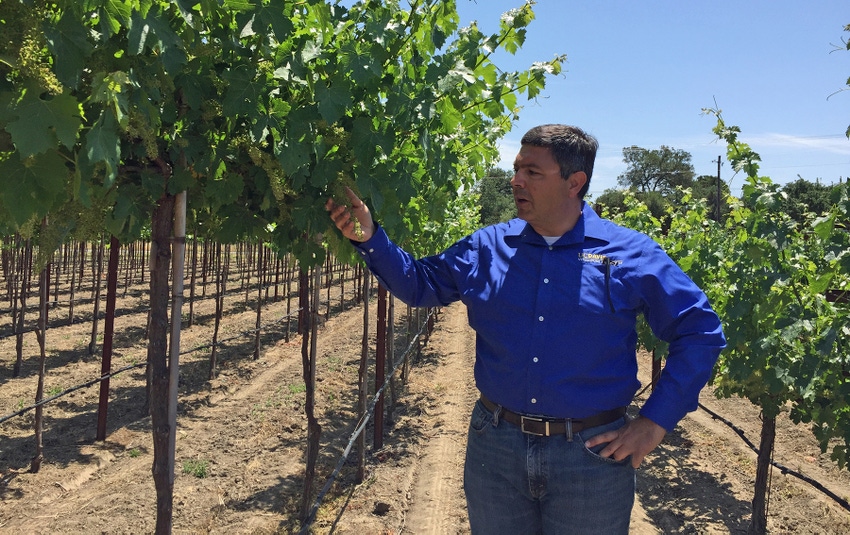
There’s a new concept for achieving more efficient vineyard management. It’s not totally new, but as its research developer, Kaan Kurural, admits, “We reported on this two years ago, but no one was ready then to convert. That was then, but now, because of a lack of a labor pool or hit-and-miss labor availability at best, it becomes a more attractive option.”
The “new concept” here involves what Kurtural, Cooperative Extension Specialist with the University of California Davis’ Department of Viticulture and Enology, says he has proven - that switching to mechanical pruning and suckering is a better way of doing things, “a way to rejuvenate and retrofit vineyards that, for lack of a better term, will help them become a part of the 21st century.”
It involves switching from the traditional California sprawl system, found in a lot of older vineyards that are still hand-pruned because of the difficulty of mechanization due to the twelve inch cross arms, and implementing a bilateral cordon-trained box-pruned single high-wire system with no cross arms so a machine can zip through without having to open and close its cutting head.
Typically, in the San Joaquin Valley where more than half of all California wine grapes are grown, traditional vineyards are head-trained to a 38-inch-tall trunk above the floor and two eight-node canes are laid on a catch-wire in opposite directions, and two eight-node canes are attached to a 66-inch-high catch wire.
Currently, Kurtural says, “It costs roughly a dollar and twenty cents to prune and tie a head-trained vine using human labor whereas if you do it mechanically, it costs just seven cents a vine, so you have an order of magnitude when it comes to cost.”
Hand-pruning expensive
Back story: Experimenting on 8 acres of a 20-year-old, 53-acre Merlot vineyard in Madera County, Kurtural was told by the owner that the old vines were OK, but he couldn’t afford to farm them anymore because he’d have to hand prune and tie them, a costly process, and his bottom line was to the point where there was no give. He was losing money and needed a solution to solve the problem.
“He had a head-trained vineyard with stakes, lined posts that couldn’t accommodate mechanical harvesting, so we converted the orchard to a single high-wire system which is 100 percent mechanically compatible. In doing so, we didn’t lose any yield as we converted-in-place without having to remove and replant the vineyard and wait another three years for it to come back into production.
“We left fruit on the trunk as we trained it up, lost no yield in the process (in fact, productivity rose by 15 percent), and when the vineyard was finally completely converted at the end of year three, it was much better than the previous system and the quality was improved. And the labor cost savings was greater than 90 percent.”
Kurtural says the results prompted the owner to convert the remainder of his field. Other nearby, larger growers saw the wisdom of his action and followed suit. The Wine Group, managers of 13,000 acres of vineyards throughout central California, is currently converting old vineyards to accommodate mechanical pruning and suckering.
The new way of doing business isn’t just found in the valley, it’s already being implemented in vineyards in Napa, Sonoma, and the central coast in the Paso Robles area.
“I can’t say for sure that this will be the wave of the future, but one thing is certain, it could possibly be the way to go in Sacramento County and perhaps throughout California’s wine-growing country. I don’t get much work done in my office anymore because so many interested parties are continually showing up at our research station to take a look at the process in operation.”
For more news on pests, disease management and other issues affecting vineyards, subscribe to the bi-monthly newsletter The Grape Line.
About the Author(s)
You May Also Like




